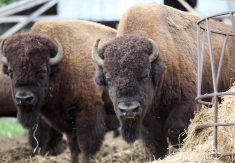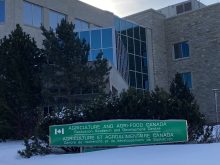According to the farm input price survey published monthly by Alberta Agriculture, the average price of full service anhydrous fertilizer (82-0-0) increased from roughly $782 a tonne in January to $818 in February.
Phosphate prices (11-51-0) also increased, going from about $701 to $725 per tonne. Somewhat surprisingly, urea prices (46-0-0) continued their three month decline, slipping to around $466 a tonne, down about $5 from January to February.
I find fertilizer price trends very interesting and often point to them when speaking to various groups. As far as I know, this is the only regular retail price information available on fertilizer in Western Canada.
Read Also

High prices see cow-calf producers rushing to incorporate
Farm accountants are reporting a steady stream of cow-calf producers rushing to get their operations incorporated ahead of selling their calves this fall.
The price graphs on the Alberta Ag website go back five years and show that there’s usually price savings and often big price savings from buying fertilizer, particularly nitrogen, well before spring seeding. This winter has been an anomaly for its lack of price appreciation on urea.
The Alberta Agriculture survey includes a wide array of products — farm diesel, building supplies, seed, crop protection products and even machinery costs. While those are interesting, I don’t find them very useful for purchasing decisions.
To view the survey information, just search “Alberta Agriculture farm input prices.” Surprisingly, this long running service does not seem to be well known or highly used.
The Agricultural Producers Association of Saskatchewan is collecting farmer opinions to see if a farm input price survey would be useful for Saskatchewan farmers.
When asked, producers are likely to say that farm input price information would be welcome. However, it’s important to realize the shortcomings of any price survey.
In the Alberta case, the information has a significant time lag. February prices weren’t available until mid-March. You’re looking at history rather than where prices may be in a fast-moving market.
It’s also reasonable to expect regional variability plus the variability that will exist from one supplier to the next. Could Saskatchewan farmers just look at the Alberta survey to get a sense of the trends or would a Saskatchewan survey provide additional information?
On crop protection products, the same chemistries are typically available under numerous brand names. How can that be reflected in a survey? Plus, purchases tend to be seasonal.
The same problems exist with seed prices. Certified barley, canola and wheat seed will see the price vary by variety. Does an average price really tell you much?
The Alberta Ag information shows that the average price of a new four-wheel drive tractor in the 325 to 375 horsepower range has gone from around $275,000 five years ago to around $385,000 last month. Similar price increases are noted in the combine and air drill examples.
Interesting, but how can producers use that information, particularly if they’re looking for a different size of unit and probably a specific model? As well, there’s no information on the cost of used equipment.
In the end, if organizations like APAS want to generate more farm input cost information, fertilizer might be the best emphasis. It’s a major input cost subject to wide price swings, and producers are interested in the price direction throughout the entire year.
You don’t buy a new tractor every year.
Diesel and gasoline prices are pretty transparent. The biggest knowledge gap to address with a survey is probably fertilizer.

















